Thean Hou Temple is one of the most renowned Chinese temples in Kuala Lumpur. I've had the pleasure of visiting it several times, with my last visit being around six years ago. With Chinese New Year just three weeks away, I knew they'd be putting up decorations for the celebration, so I decided to drive to Thean Hou Temple this morning.

There is a large parking area in front of Thean Hou Temple, so there is no need to worry about parking difficulties. Today is a weekday, and no one was there to collect parking fees. I remember the last time I visited was on a weekend, and I had to pay an RM5 parking fee.
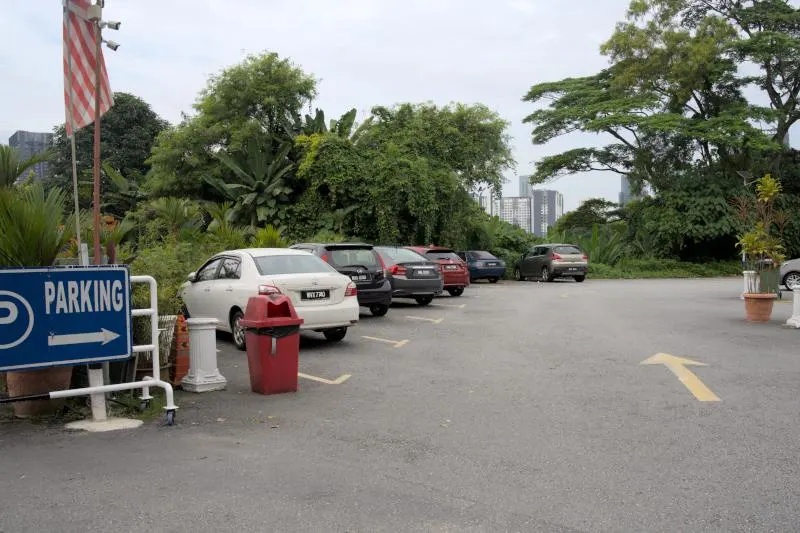
As expected, rows of colorful red lanterns have been placed in front of the temple as decorations for the upcoming Chinese New Year celebration. My first impression is that the temple is exceptionally well maintained, even after all these years. They have consistently painted it to keep it fresh and inviting.
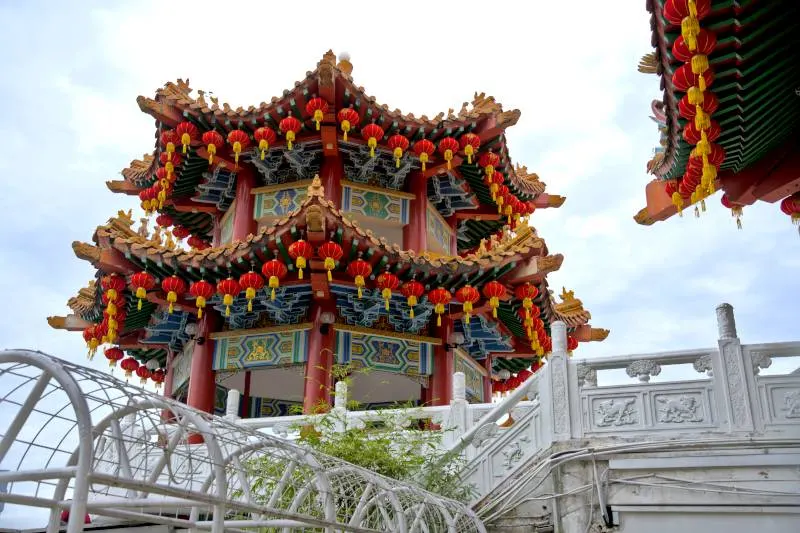
History of Thean Hou Temple Kuala Lumpur
Thean Hou Temple Kuala Lumpur (also known as the Temple of the Goddess of Heaven) was built in 1981 by the Selangor and Federal Territory Hainan Association and officially opened on 3 September 1989. It is located on a hilltop Southwest of Kuala Lumpur with a spectacular view overlooking the city.
The Guan Yin statue
The temple has largely retained its original charm, with its structures, statues, and gardens remaining unchanged over the years. You will not miss the statue of the God of Mercy, Guan Yin, next to the entrance. Guan Yin is the Buddhist bodhisattva (菩萨) associated with compassion. It surprised me that the first statue after the entrance is not the Goddess of Heaven 天后, after whom the temple is named!
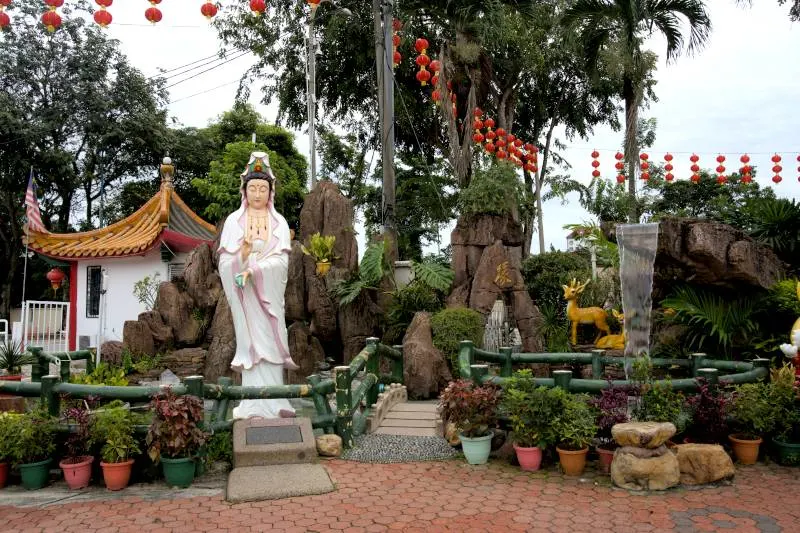
However, at the far end, I noticed a large statue of a female deity, and I was unsure if she is Mazu (天后圣母), the main deity of this temple.
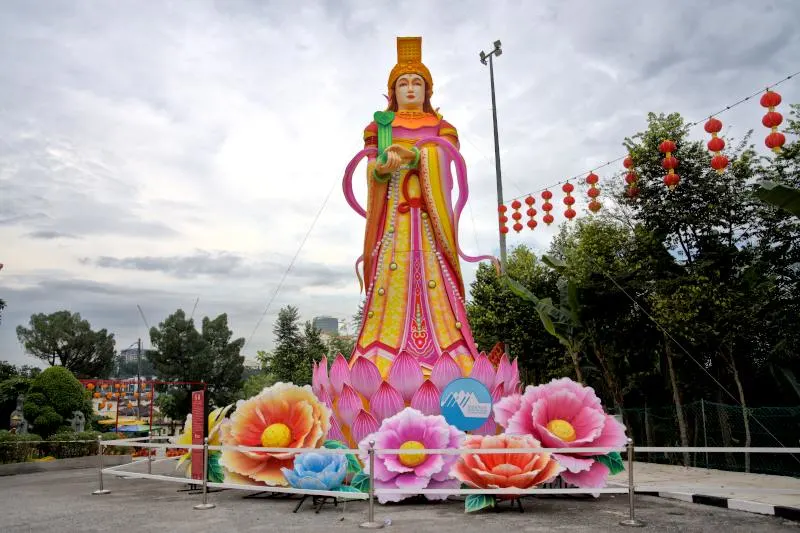
The 12 Zodiac Animals Garden
On the left side of the temple is the Zodiac Garden, which features 12 animal statues representing the various zodiac signs. They have recently been repainted, giving them a fresh appearance. There is a description In front of each statue indicating the year associated with that animal.
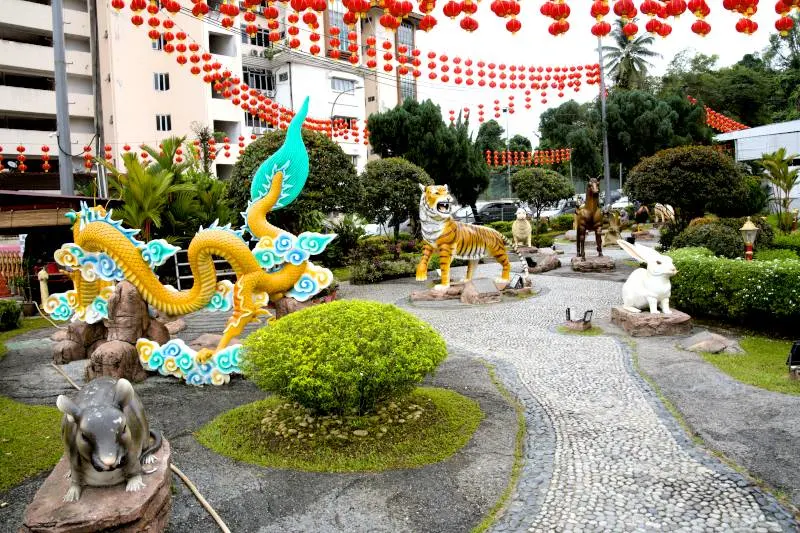
The belief of the Zodiac dates back to the Han Dynasty. The Chinese Zodiac is a twelve-year cycle, with an animal representing each year. Each animal has its traits and personality, and you will inherit the characteristics of the animals representing the year you were born.
Foodcourt, shops, and the Thean Hou Temple marriage registry
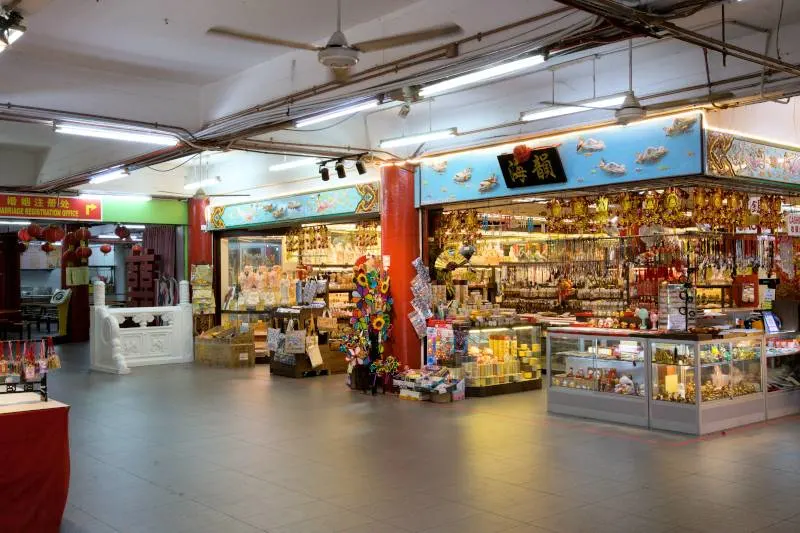
The temple's basement houses a food court and souvenir shops, but it serves more than these functions. t also houses the Thean Hou Temple marriage registry. Many couples enjoy taking photographs for their wedding registration at the temple, so the government has established a branch that officially handles wedding registrations.
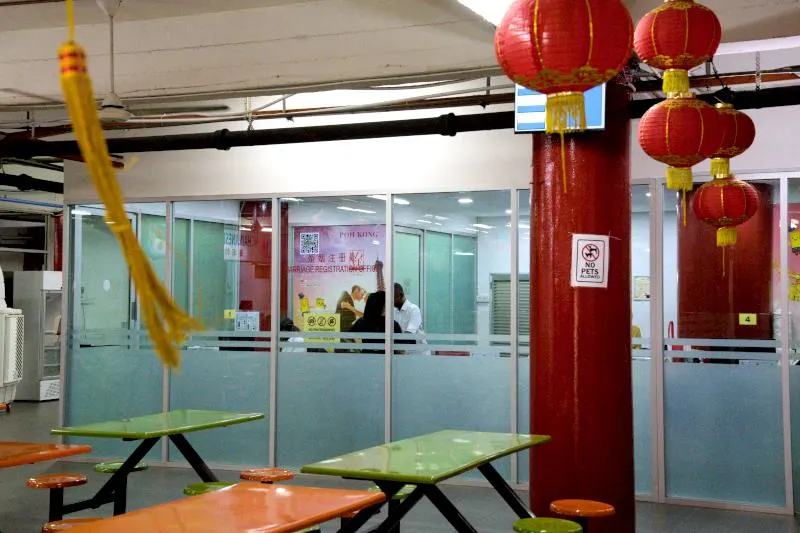
A large chessboard is on the grass slope at the back of the temple. Below it is a heart-shaped flower with the message "Love Your Forever." This spot is popular among the newlyweds who have wedding ceremonies here to take photographs.
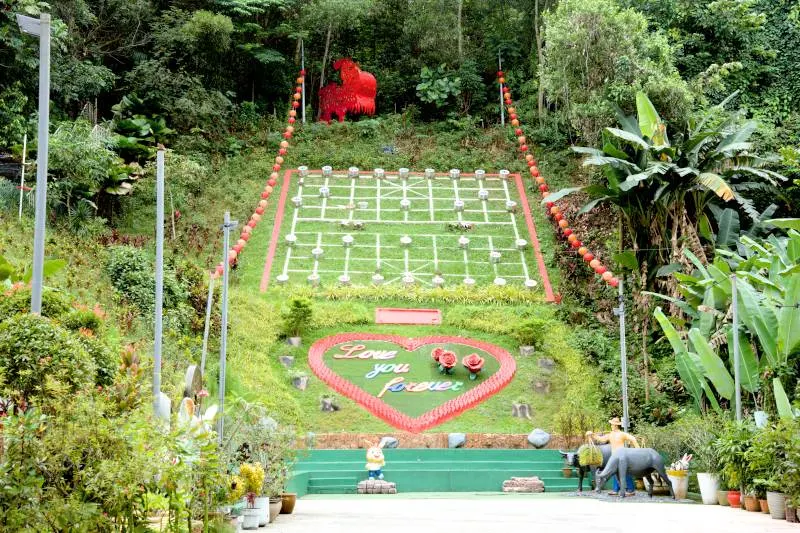
The Sculptures of Twenty-four Filial Exemplars 二十四孝
I strolled around the garden from front to back before entering the main temple hall. The Sculptures of Twenty-four Filial Exemplars are at the back of the temple. In front of each statue is a small board that briefly explains the story behind it.
It is based on an ancient book by Guo Jujing 郭居敬 during the Yuan dynasty, a collection of twenty-four short stories about how children demonstrate their love, care, and respect to their parents in an exemplary manner.
This book was exceptionally influential in medieval Chinese society, where the stories were part of the Confucius study for children. That is why most people think that the Chinese treat their elderly better than people in the West. If this is true, the moral values instilled in the children must be one of the significant reasons.
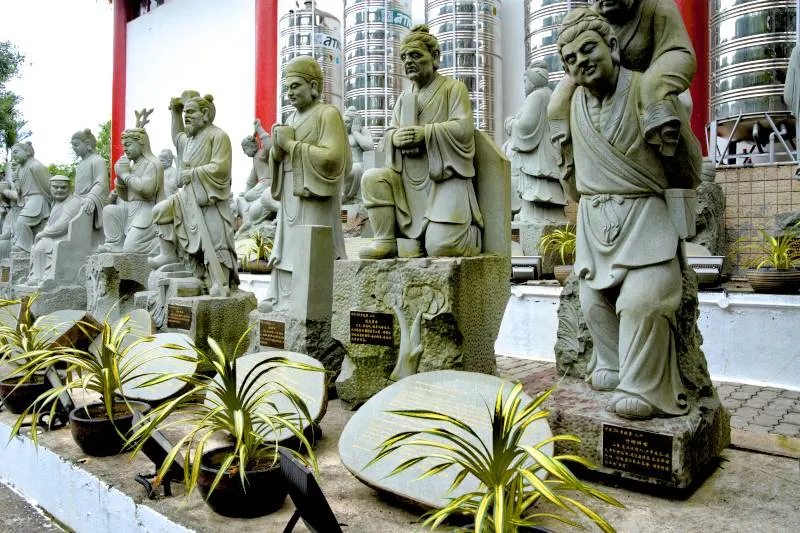
The main shrine
The ground floor of the temple building features a large function hall, which was closed during my visit. The main shrine is on the first floor, accessible via the white staircase on both the left and right.
As for many Chinese temples and sacred sites, I had to remove my shoes to enter the main shrine. Photography inside the main hall is allowed as long as it is respectful and does not involve offensive poses. Unlike many other temples with numerous deity statues, this one contains only three major female deities. The central deity is the Mazu (天后圣母), which the temple is named after 天后宫 (Tian Hou Gong). On the right is the Goddess of Mercy 观音菩萨, and the Goddess of the Waterfront (shui wei sheng niang) 水尾圣娘 is on the left.
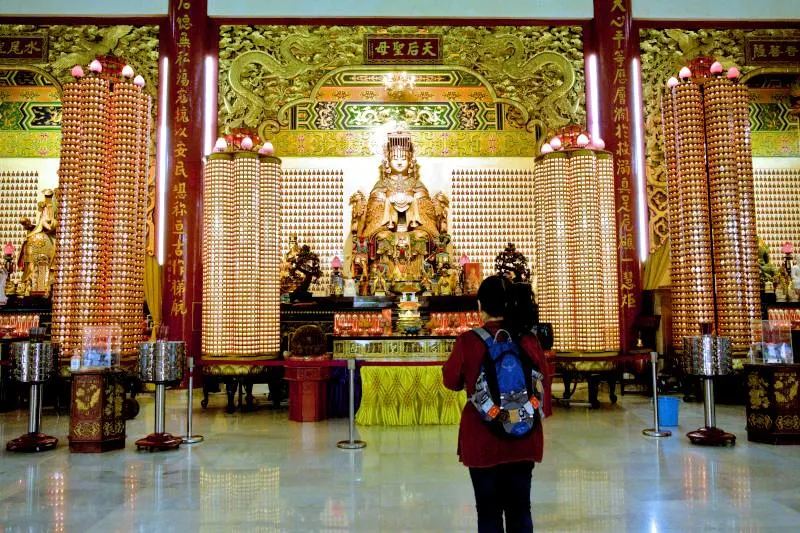
The temple's sign is much more modern than many older temples I have visited. Inside the hall, the ambiance is bright and calm. The main temple shrine has intricate carvings, elaborate embellishments on the beams, and spectacular ceiling art. I especially admired the intricate and grand ceiling artwork.
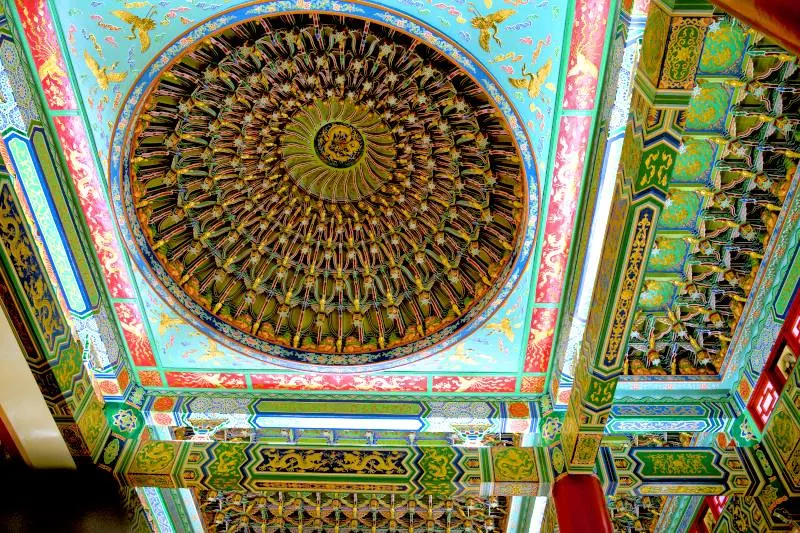
On either side of the main deity stand the self-rotating pillars, each softly illuminated and gracefully turning, cradling numerous small statues within. This feature is not commonly seen in other temples.
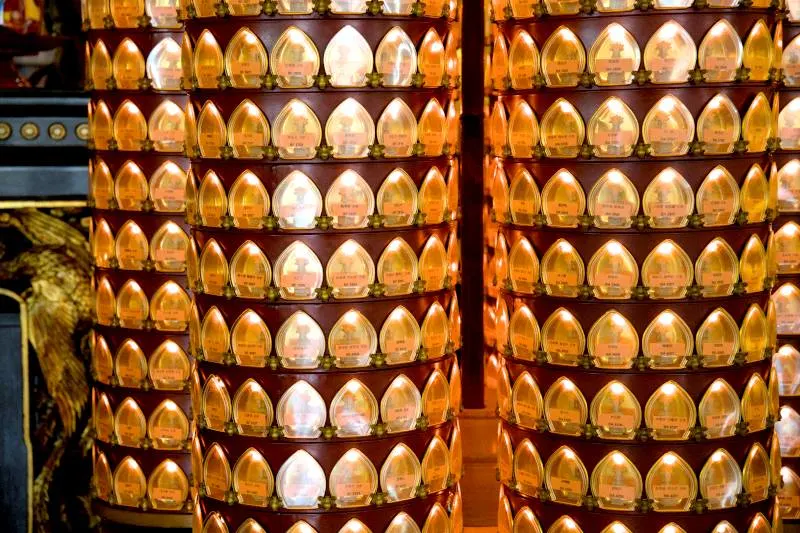
Fortune Telling 求签 at Thean Hou Temple
At the main temple shrine, you can experience a self-service fortune-telling. Kindly donate by placing your chosen amount in the donation box. Next, take the bundle of fortune-telling sticks, known as 'qian' (签), and shuffle them. Then, raise the entire bundle and allow it to fall back into the container.
Thereafter, select the 'qian' that sticks out the highest. The fortune-telling script corresponding to the number on the stick you picked can be found in the drawer beneath the stick container. Your predicted fortune is written in both Chinese and English in the script.
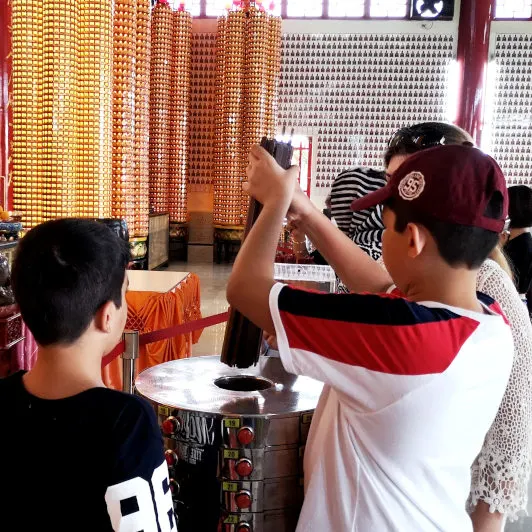
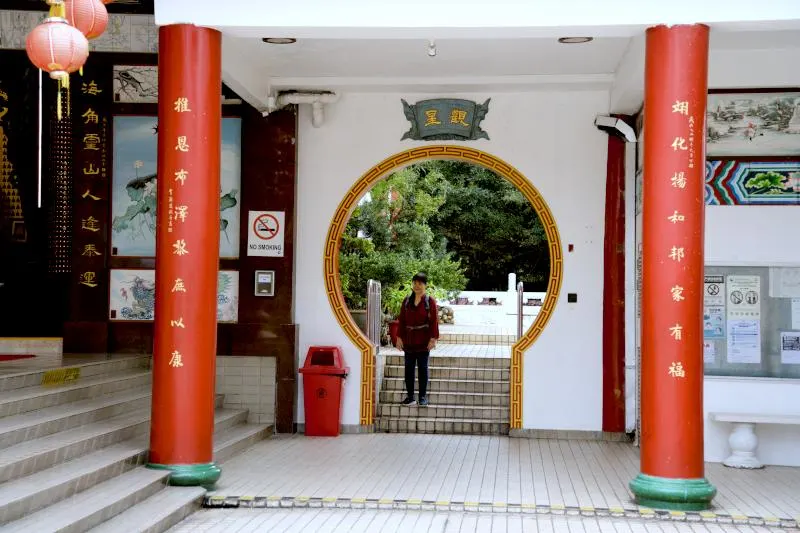
Who is Thean Hou?
Thean Hou is the presiding deity of Thean Hou Temple. She is the same deity worshipped under another name called Mazu 妈祖. She is the deitized form of a shamaness called Lin Moniang 林默娘 in the Fijian province, dating from 960 to 987.
Legend has it she had studied various religious literature since she was young, mastered Confucious by eight, the Buddhist Sutras by 11, and master the book of lore 玄微袐法 by 13. which was left to her by the Taoist master Xuantong. She gained the ability to see the future and visit places spiritually without travel.
She used her extraordinary ability to roam the sea and protect the fishermen through miraculous interventions.
The top floor of Thean Hou Temple Kuala Lumpur
I then walked up to the top floor, one level above the main shrine, where I enjoyed an unobstructed view of Kuala Lumpur city.
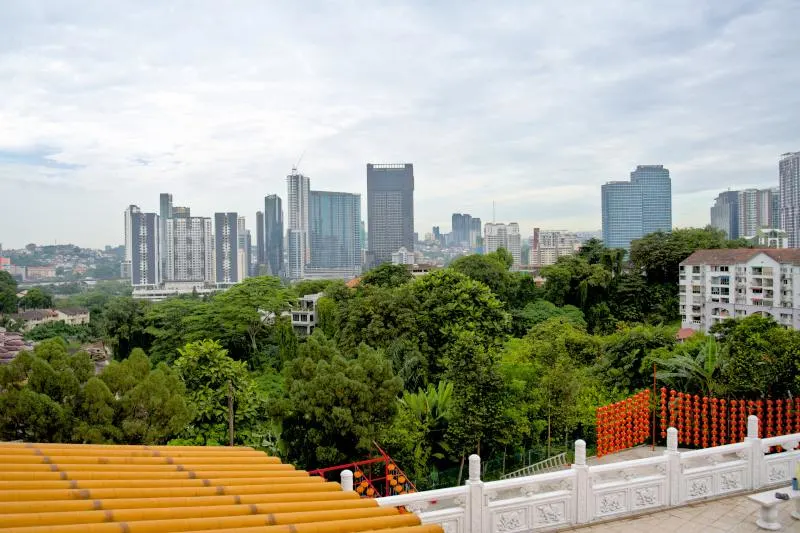
This is also the best spot to admire the beautiful roof decoration of the temple.
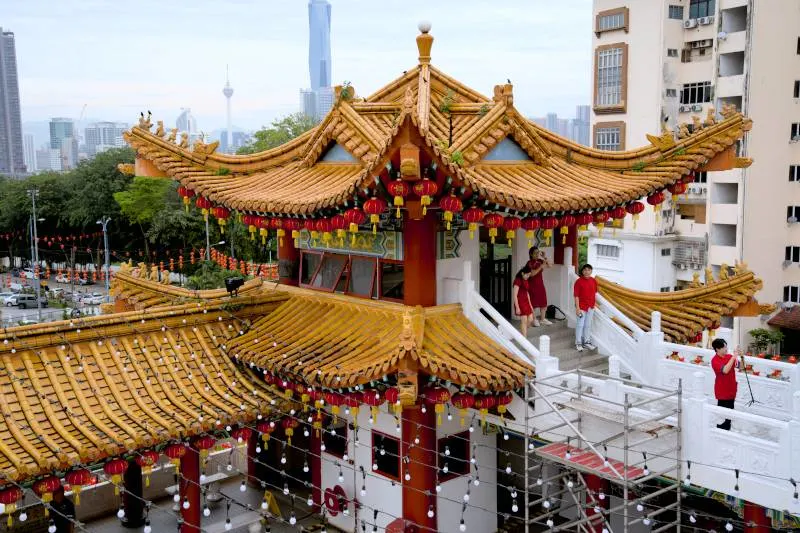
Holy water
On the way back to the main temple shrine, there is a small Guan Yin statue among the rocks, and a cascade of water flows in front of it.
Devotees can kneel before the statue to receive Holy water from a dispensing jar. This spot is popular for making wishes.
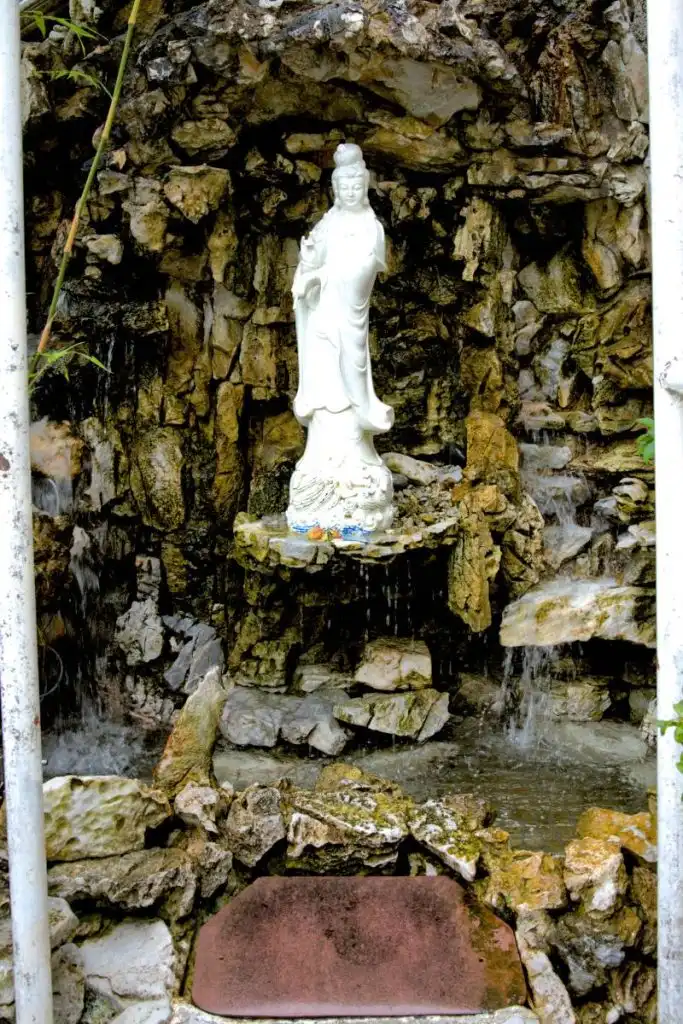
The Chinese medicinal herbs garden
An elegant walkway on the left of the temple building leads to the medicinal garden and tortoise pond. The garden displays common Chinese medicinal plants, each with a sign indicating its medical usage.
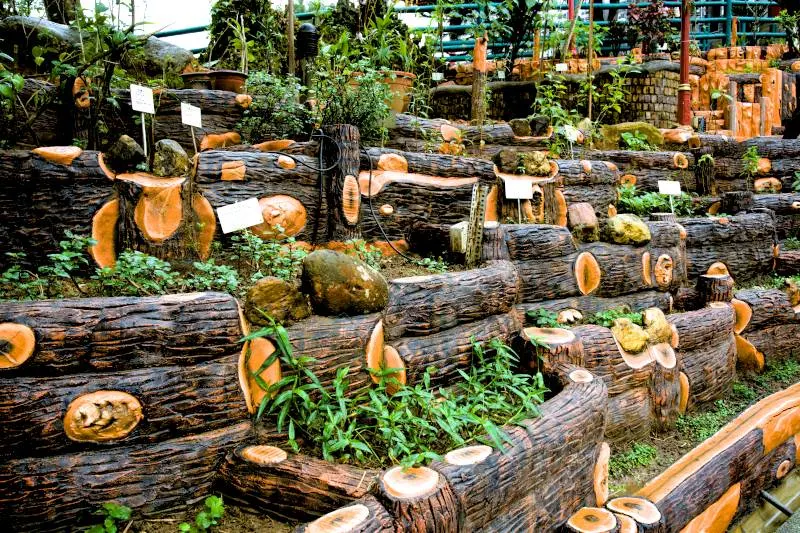
Someone was busy painting and maintaining the bridge during my visit. It is clear that they actively care for this place, as I remember the color was much duller during my last visit.
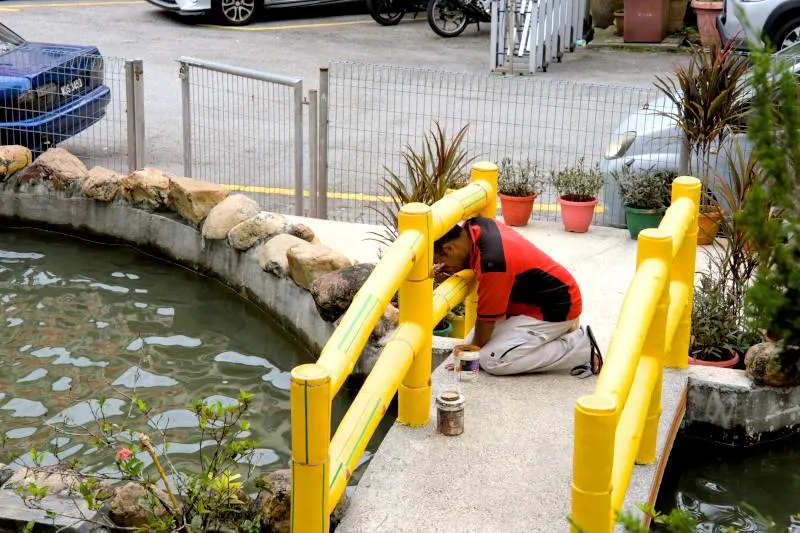
What was missing during this visit
There is a small exhibition hall opposite the sculptures of filial piety, but unfortunately, it was closed during my visit. On my previous trip, I found the mural and exhibits outside the exhibition building to be fantastic spots for photography. Also, an outdoor kitchen had become a favorite location for selfies. However, when I visited today, these attractions were no longer there.

Before leaving the temple, I returned to the front garden, where there was a statue of the god of marriage, Yue Lao.
Yue Lao, which literally means "Old Man Under the Moon," is regarded as the God of Marriage and Love in Chinese mythology. He is also known as the matchmaker from heaven. Yue Lao appears as an old man holding a romance book in his left hand and a walking stick in his right hand. The romance book contains the names of predestined couples that Yue Lao will unite. He is famously associated with the "red string of fate," which he uses to connect destined lovers. This thread is said to be invisible and unbreakable, symbolizing the enduring bond between couples regardless of their circumstances.
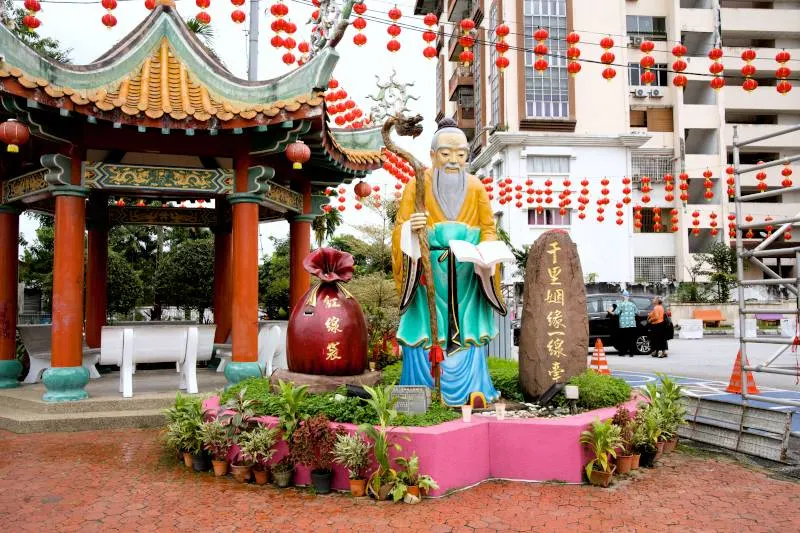
Is it worth visiting Thean Hou Temple?
As someone who has lived in Kuala Lumpur for many years, I highly recommend this temple. It is one of the most famous in the city and exceptionally well-maintained. I suggest you allocate about 45 minutes for your visit, as I don't want you to miss anything.
The temple is open daily from 8:00 am to 8:00 pm, with no entrance fee. You can take pictures freely. However, remember that it is situated on Robson Hill, and there is no direct public transport to the temple. The closest you can get by public transport is to Brickfields, about a 20-minute walk uphill to reach the temple. The best way to get there is to use an e-hailing service that is widely used in Kuala Lumpur.
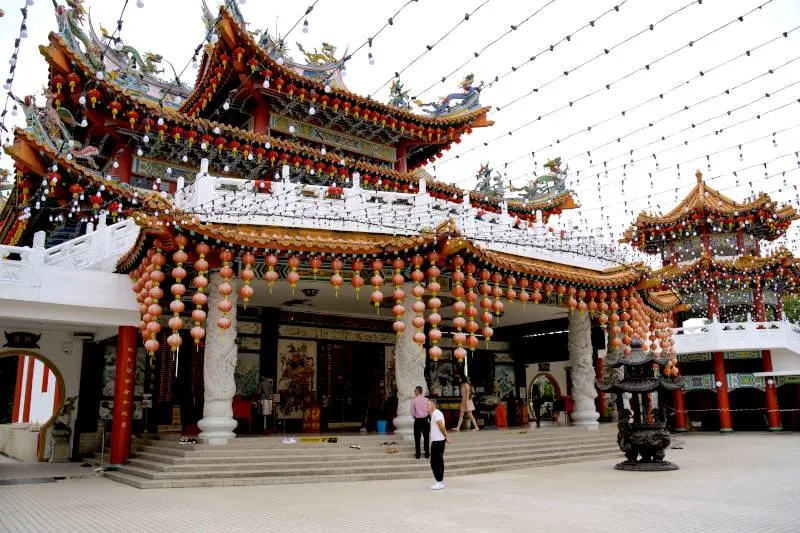
🎞️ Watch the video: Best places to visit in Ipoh
Please watch the video we made at Thean Hou Temple by clicking the image below
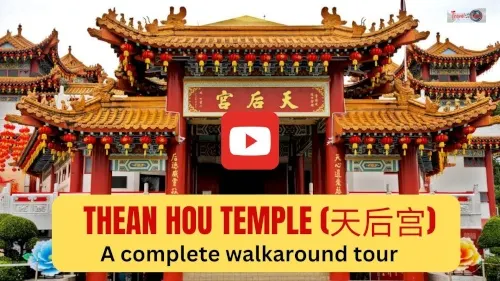
Useful information for Thean Hou Temple Kuala Lumpur
Address: 65 Persiaran Endah, Off Jalan Syed Putra, Kuala Lumpur, Wilayah Persekutuan 50460.
GPS: 3.1219036, 101.6877459
Opening hours:8:00 a.m. –8:00 pm daily
Entrance: free
Dress code: smart casual
From KL Sentral: The nearest bus stop is at Balai Polis Brickfields. From there, walk 1.1 km to the temple. t is best to use the Grab service or a taxi.
Parking fee: RM5 per vehicle on Saturday and Sunday. Free parking on weekdays.
The location of Thean Hou Temple
Other places to visit in Kuala Lumpur
I have written many articles about places to visit in Kuala Lumpur, including the Kuala Lumpur City Center, Batu Caves, and the Petronas Twin Towers. You can access the complete list of these places here.
